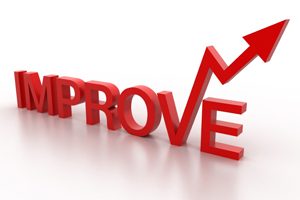Six (More) Steps To Better Brainstorms

Six (More) Steps To Better Brainstorms
 In my previous post on making brainstorms work, I shared some of the things that many of us dislike most about brainstorms. And not surprisingly, these are the things which if not managed properly, result in brainstorm failure.
In my previous post on making brainstorms work, I shared some of the things that many of us dislike most about brainstorms. And not surprisingly, these are the things which if not managed properly, result in brainstorm failure.
On a more positive note, I shared six of the things you can do to increase the chance of brainstorm success. Here are six more:
- Invite Participants From A Number of Disciplines: If your goal is an agnostic, integrated approach, common sense dictates that you invite participants with expertise beyond traditional public relations. If you have to go beyond your agency for this brain-power, so be it. In fact, shaking things up creatively by having non-agency personnel attend is always a good idea. If your program is for a tech product, don’t be afraid to invite healthcare PR or agency “foodies.” If it’s for a consumer product, invite tech and healthcare PR pros. Sometimes the best ideas are generated by those who bring the outside-looking-in perspective.
- Invite Participants From A Number of Levels: Actionable, creative, tactical ideas can be generated by PR pros of a variety of experience levels. Don’t limit yours to the gray hairs. Have a good mix of Boomers, GenXers and Millennials (Gen Ys) in your session. This is particularly true if you’re trying to develop programs that may in some way tie to popular culture, that will have digital components, and might need to be delivered via mobile channels. In other words, nearly every program today!
- Use Brainstorms To Develop Programs, Not Strategies: While I advocate having pros from all levels at the brainstorm itself, developing strategy is not for newbies, nor for committees. In fact, there are few things worse than using brainstorm time arguing over strategy. Your brainstorm will be far more successful if you have a clear strategy from the get-go. That’s because at various times during the brainstorm the problem holder must choose which ideas the group will focus on and develop, which she/he can develop on her own, and which ideas will be allowed to die a natural death. (Notice, we never talk about ideas being killed, rejected or jettisoned.) A solid strategy is what allows the problem holder to say “yea” or “later” at critical times during the session. In fact, the brainstorm methodology in which I was trained during my Ogilvy & Mather PR days was developed by Ogilvy Research to be used by all the agency’s many divisions to create a strategic “floor” to assure that ideas developed at brainstorms weren’t just creative, but would indeed solve clients’ marketing and communications issues.
- Much Must Happen Before The Session: A brainstorm isn’t the beginning, but the midpoint of developing an effective communications plan. Before the session, the facilitator should meet with the problem holder to determine, among other things: 1) The problem that the group is there to solve; 2) Different ways of looking at the problem; 3) Who the real problem holder is. If, for example, the EVP or agency owner is going to be the decision maker, than she, not the VP or AS, should be the problem holder during the session; 4) Explain the methodology that the facilitator will be using so that the problem holder is fully on board, including brainstorm rules. (I covered the importance of having a facilitator and brainstorm rules in my previous post.)
- The Problem Holder’s Work Starts Before The Session: In addition to participating in the advance meeting outlined above, the problem holder must determine the strategy in advance of the session. This can be done in consultation with one or two other agency executives who fully understand the client’s issues, and who clearly get the difference between goals, objectives, strategies and actions/tactics. Once the strategy is developed and committed to, the problem holder should share this in a brief that also contains a clear discussion of the goals and objectives, the issue, the competition, and any complicating factors. This should be limited to one to one-and-a half pages. If it’s longer, many of your participants won’t read it.
- Participants’ Work Starts Before The Session: The brief mentioned above should ask each participant to come to the session with three-to-five programming solutions to the client’s problem. This is particularly helpful for introverts, who are sometimes uncomfortable with the group dynamic, developing ideas on the spot, or sharing them with a group that includes boisterous extroverts. It also starts the brainstorm off with terrific momentum.
I’ll have more suggestions on brainstorms that generate valuable ideas in my next post. Meantime, I’d love to hear what you’ve done to foster better brainstorms.


